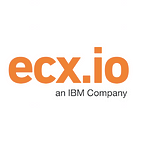How Product Information Management contributes to company success
If a product shown in a flyer hasn’t been available for a long time, or if the webshop provides information on a long-outdated version of software, it quickly becomes clear that the seller has a problem with the organisation of their product information. This is the case for many companies that do not carry out Product Information Management (PIM). No-one can afford an insecure customer who switches to the competition. How can a Product Information Management system help?
There is no question that every company has extensive product information. As a rule, it is for internal use in the ERP system, but it is often structured using internal criteria, only contains core information and isn’t integrated for all departments. The latter is often the reason why parallel Excel lists or additional product data banks are reproduced for different departments. Each department has its own product data and adapts it for its own purposes. On the one hand this leads to considerable duplication, since the very same data is always reused rather than being rationalised. On the other hand, there is a great risk of inconsistent information when department B cannot automatically access the information enhanced by department A, such as new product images. This not only entails unnecessary costs but also a considerable amount of work for the employees. Even the smallest adjustments must to be checked. When there is an error, the revision process is extremely time-intensive.
Single Point of Truth
The solution to this problem is PIM in conjunction with Product Content Management (PCM). Often the distinction between Product Information Management and PCM is not made in practice, and both terms are used for the same projects and applications. However, whilst the Product Information Management system manages technical product data, the PCM system combines it with further information, such as marketing texts and images. The PCM system is a Single Point of Truth for all product information within the company. Therefore, the PCM is the sole source for all employees who need product information for their work and for all channels on which the information is being presented. The PCM extracts data from various sources, such as the ERP, databases and Excel lists, and consolidates them into a single database. Information collected in this way is automatically adapted for presentation on the respective channels. This last function of a PCM is particularly important for commerce. An example: The PCM contains marketing content, such as an application image for a product. Such an image does not contain any product information, but it must nevertheless be linked to it so it can be integrated into the various marketing activities for the product in question. Consequently, the PCM can be used by all outward facing channels, including the company webshop, the separate eBay shop and the product flyer. Changes to the product data need only be made once and will be synchronised for all channels.
Over and above this, product data can be enriched by using a PCM system. In many cases, information about a product originates from suppliers, but may for example be unsuitable for selling, still need to be categorised or might need translating. For this type of recurring processes, which employees have to carry out manually without PCM support, Product Content Management ensures a considerable time saving. If data enrichment is automated, the data quality must be checked. The PCM system also undertakes this with the help of roles, workflows and reports.
In order to fulfil these functions, companies must make sure they choose a suitable and standardised PCM system. This ensures that sufficient support for updates and system expansions is available in the future. Leading systems used by many companies also have a correspondingly large base of implementation partners. In addition, the options for connecting to other systems are important. As well as the existing interfaces, the depth of integration with other standard products, such as SAP, plays an important role.
Common wording and product hierarchy
With the implementation of a PCM project, the company faces various challenges. It is therefore advisable to choose a partner who already has several years’ experience in the implementation of PCM projects and knows the typical challenges. Firstly, however trivial it sounds, a common wording must be found. Not everyone takes a category to mean the same thing. Saleable units can be referred to as products in one company and as product variants in another. It is necessary to define common terminology not only for internal use but also for communicating with the customer.
The example of the terms ‘product’ and ‘product variant’ also identifies another problem: Information about product variants in ERP is often not linked up. As an example, without a consistent product hierarchy a shoe that a customer is looking for would be displayed ten times in the webshop because it is available in ten different sizes. There is no information in the system that these ten product variants belong together. The product hierarchy becomes clear with a system landscape and data flow analysis. It also determines which information is available in which systems. As a rule, product data such as size, weight and price is found in various ERP modules, whereas marketing information may be in a Digital Asset Management System or on an existing company page.
